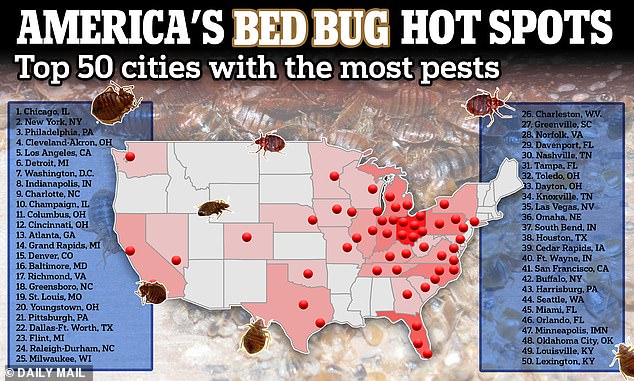A new, harder-to-kill species of bed bug is invading the United States, experts say, and may already have established itself in many northern cities.
Once confined to countries near the equator, the species known as Cimex hemipterus, or tropical stink bug, has already been confirmed in Florida and Hawaii.
Unlike the common bed bug, the blood-sucking insect is resistant to virtually all insecticides, probably thanks to its excessive and rampant use against mosquitoes.
Its body composition means it is also able to evade traps such as smooth-sided traps, which are placed under the legs of the bed to catch bugs.
It comes as outbreaks of the plague are increasing in up to 50 countries. Across the United States, the cities experiencing the most outbreaks are in the Midwest.
Residents of Chicago, New York and Philadelphia should inspect their mattresses, as experts report that their cities ranked first, second and third for bed bugs in 2023. The new findings were based on economic data from bed bug treatments both residential and commercial.
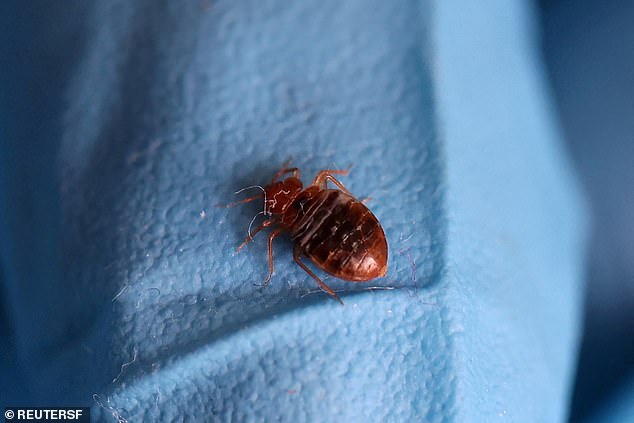
Bed bugs do not carry disease, but the bite of one causes red, itchy welts on the skin, similar to those of poison ivy.
Entomologists at the University of California, Riverside, revealed the worrying spread of this blood-sucking creature in an article published in the journal Annual Review of Entomology.
While almost all cases were limited to deprived areas of Africa and Asia after mass use of insecticides nearly eradicated them following World War II, the insects have now “re-emerged” and spread to parts of Europe and the Americas.
Researchers say the tropical bedbug was detected in Florida in 2016 for the first time in 60 years, and then in Hawaii, where it was reported in 2020.
However, researchers fear that heating and air conditioning (which keeps buildings at constant temperatures year-round) and the sudden return to pre-pandemic travel and more people traveling may have fueled the spread along with resistance to insecticides.
Cases of insects detected as far north as Russia and Norway suggest they can now survive in colder areas, they said.
There are also fears that the plague could transmit and transmit more harmful diseases between humans, possibly including hepatitis.
The scientists, including Dr Chow-Yang Lee, from the University of California, Riverside, said: “Most bed bug control products were developed for (the common bed bug), with the assumption that they would also work ( for the tropical stink bug).
‘However, biological differences between species are being discovered that have implications for management (of tropical bed bugs).
‘A recent study showed that (the tropical bed bug) easily escapes from traps containing (the common bed bug), since the species has more hairs on its (legs), which gives it more grip and allows it to climb smooth surfaces .
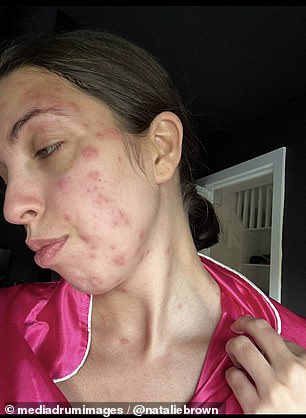
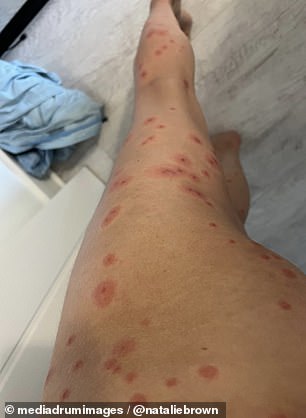
Natalie Brown (pictured), 28, was left covered in bedbug bites after spending three days on holiday in Benidorm, Spain.
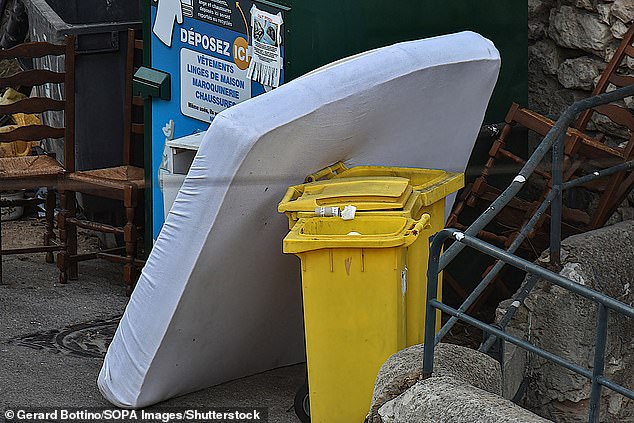
The insects hide in mattress fabric and crevices before emerging at night to bite their sleeping victims. Bugs can also hide in clothing, furniture, and even books.
‘Unlike (the common stink bug), which has several standard strains susceptible (to insecticides), there is no strain (of the tropical stink bug) susceptible to insecticides.
‘Likewise, it is not known whether (the tropical bed bug) produces different health impacts, perhaps due to the existence of different antigenic compounds in saliva.’
Warnings about bedbugs emerged in London late last year after one caused panic when it was spotted on the tube.
There was also concern about outbreaks in France, after celebrities attending Fashion Week, including Gigi Hadid and Paris Hilton, reported seeing insects at the events.
It was unclear whether these outbreaks were caused by the tropical type.
Bed bugs seemed to have gone down in the history books in the 1940s thanks to powerful pesticides like DDT, which killed them instantly.
But amid the overuse of many chemicals, insects have acquired genetic mutations that make them resistant, such as developing the ability to quickly break down toxins.
They have also developed thicker exoskeletons that are less likely for chemicals to penetrate and kill insects.
This has allowed the insects to once again spread around the world largely unnoticed, thanks to many now being unaccustomed to these creatures.
Warning signs of an infestation include swollen spots, which are usually darker in the middle, and are found on the face, neck, arms or hands.
Experts say they will be arranged in a rough line (highlighting the spot where the insect has sucked blood) and will cause serious itching.
To detect an infestation, patients are advised to look on their bedding for rusty or reddish stains (signs of squashed bed bugs) or small black dots (which are their feces).
Infestations are notoriously difficult to treat, and many experts no longer use chemicals because they simply don’t work.
Instead, strategies include heating rooms to 120°F (48°C) to kill insects and vacuuming cracks and crevices, such as plugs.
Experts warn that it can take up to a month to clear an infestation, because the insects are experts at avoiding being killed.
Chicago, New York, and Philadelphia have recently been named the bed bug capitals of the United States.
Researchers at pest control giant Orkin analyzed the number of bed bug treatments they issued in 50 major U.S. cities to come up with the numbers.
They also singled out Greensboro, North Carolina, as a hub with an emerging outbreak, after the city jumped 25 spots in one year to enter the top 20 bed bug hotspots.
Milwaukee, Wisconsin, also jumped 15 spots to No. 25 on the list, while Tampa, Florida, rose 10 spots to No. 31.
In New York City, data shows that about 440 outbreaks were reported in 2020, the latest year available. This is equivalent to 14 complaints per day, but is lower than the figure for 2014, when 875 complaints were registered.


